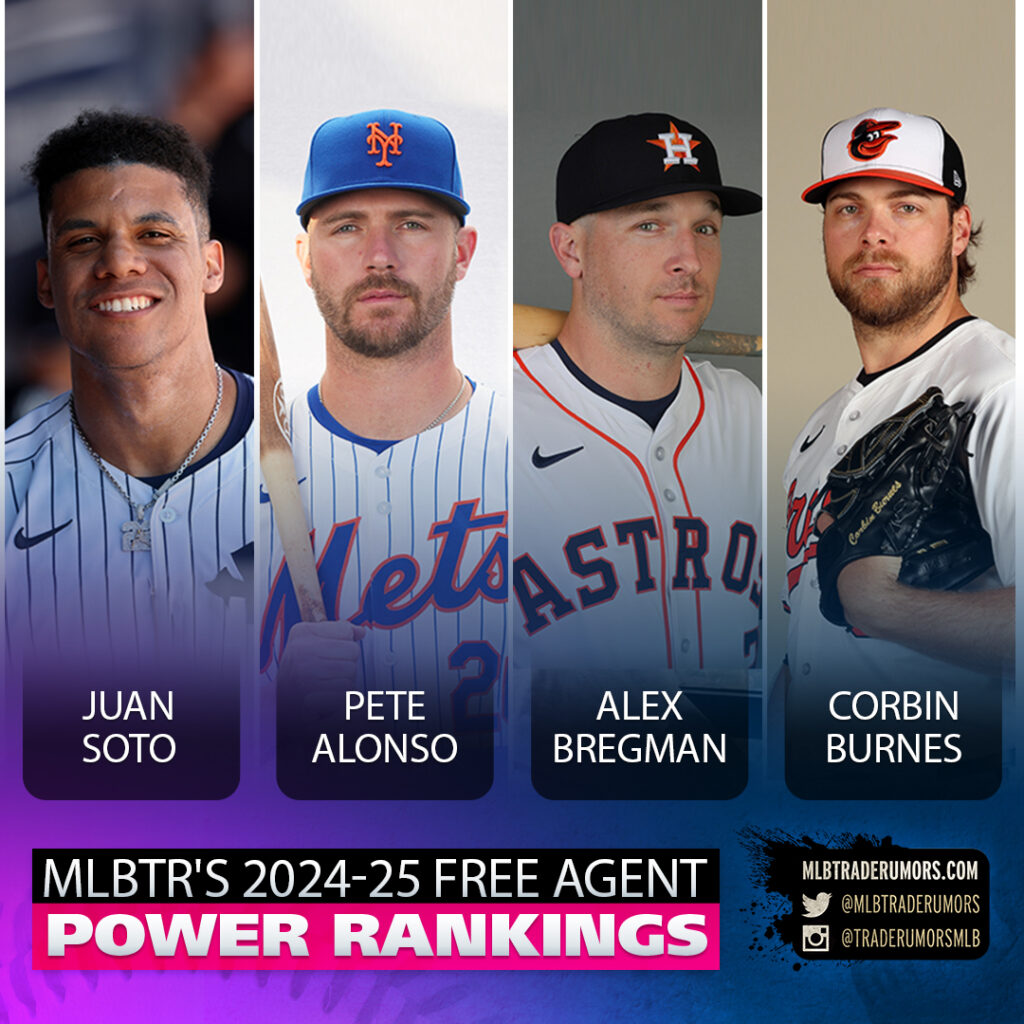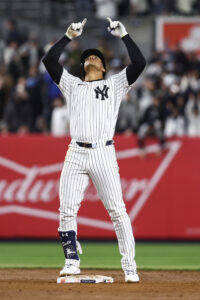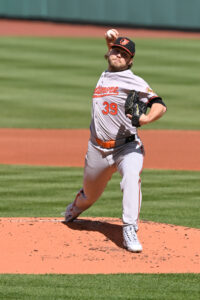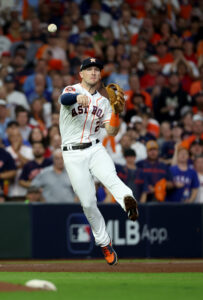A year ago, Cubs center fielder Cody Bellinger was putting the finishing touches on a fantastic rebound campaign that saw him place in the top ten of NL MVP voting and earn his second career Silver Slugger award. On the heels of back-to-back disastrous campaigns with the Dodgers in 2021 and ’22 that led to him being non-tendered, Bellinger took a one-year deal with Chicago and slashed an excellent .307/.356/.525 (136 wRC+) with 26 home runs and 20 stolen bases, setting him up for what seemed sure to be a significant payday in free agency over the winter.
That, of course, did not come to pass. Bellinger was one of several free agents who found himself struggling to find a deal that met expectations, and ultimately returned to the Cubs on a three-year, $80MM deal that included opt-outs after each season. The 29-year-old’s second season in Chicago hasn’t quite lived up to his first, as he’s posted a .269/.332/.468 (114 wRC+) slash line in 518 trips to the plate while his elevated .319 BABIP has fallen to a .287 figure that’s more in line with his career norms and his power production has dipped to more closely match his batted ball metrics.
As Bellinger and his agent, Scott Boras, ponder whether or not to exercise his upcoming opt-out opportunity this November, it’s fair to wonder if there’s any reason for him to consider opting out coming off a worse offensive season than his previous platform year, which already resulted in a relative disappointment on the open market. Indeed, USA Today’s Bob Nightengale wrote this morning that Bellinger is “fully expected” to remain with the Cubs rather than exercising his opt-out a returning to free agency this winter. Despite those expectations, however, the possibility that Bellinger could instead look to hit the open market for the third consecutive offseason cannot be overlooked.
After all, Bellinger’s offensive numbers this season, while worse than last year, are still well above league average. More importantly, however, his 2024 production is generally backed up by his peripheral numbers and appears likely to be sustainable for the 29-year-old. That’s thanks in part to the outfielder setting a career-best for strikeout rate for the second consecutive season this year, punching out at a 15.1% clip that’s good for 16th-best in the majors this year, just ahead of Bobby Witt Jr. and Jurickson Profar.
That improved combination of contact and discipline at the plate has helped to make up for the downturn in power production Bellinger has experienced this year, and is still more than enough to make Bellinger one of the top bats at his position in the majors. Among qualified center fielders this year, Bellinger’s aforementioned 114 wRC+ this year ranks seventh in the majors while his .332 on-base percentage is tied with Jazz Chisholm Jr. for fourth behind only AL MVP candidates Aaron Judge and Jarren Duran. Bellinger’s ability to play a quality center field while also delivering above average offense would make him stand out in a free agent class that without him would have Harrison Bader, who has hit just .244/.287/.390 (91 wRC+) in 407 trips to the plate with the Mets this year, as the top player available.
Given the fact that Bellinger also has an opt out following the 2025 season, it’s easy to imagine that he might simply be better off sticking with the Cubs, collecting a $27.5MM salary next year, and then returning to free agency prior to the 2026 season, when he would be leaving just $20MM on the table rather than the $50MM he’d forgo by opting out this year. While it’s true that a dominant offensive season from Bellinger could boost his profile, he’d also be marketing his age-30 campaign as opposed to his age-29 season and entering free agency on the wrong side of 30 can significantly depress a player’s earning potential. What’s more, he’d face much more competition in center field next year: The 2025-26 free agent class currently projects to include other notable center field options like Cedric Mullins, Willi Castro, and Trent Grisham, to say nothing of the possibility that Bader signs a one-year deal and returns to the open market himself next winter.
Bellinger’s status among free agency’s top center fielders would be diminished further by the fact that, he would almost assuredly not be used in center field next year if he were to remain with Chicago. The club’s recently-graduated top prospect Pete Crow-Armstrong has already taken over center field on a regular basis in recent weeks, pairing elite defense at the position with nine homers and 27 stolen bases in just 356 trips to the plate this year. The 22-year-old’s 90 wRC+ on the season doesn’t immediately jump off the page, but it’s worth noting that he’s improved drastically over the course of the season with a .269/.319/.477 slash line (119 wRC+) since the start of July.
With Crow-Armstrong all but certain to be the club’s everyday center fielder in 2025, that would likely leave Bellinger forced to move to right field on a daily basis should he play for the Cubs next year, putting more pressure on his bat to produce at a level commensurate with the expectations of the position. Impressive as Bellinger’s offense has been for a center fielder, he ranks just 20th among 49 qualified outfielders this year in terms of wRC+, leaving him as a somewhat middling option offensively for an outfield corner. Without a significant step forward offensively next year, it’s easy to imagine Bellinger leaving money on the table by not exercising his opt-out this year and returning to free agency while he’s still under 30 years old and playing center field on a semi-regular basis.





